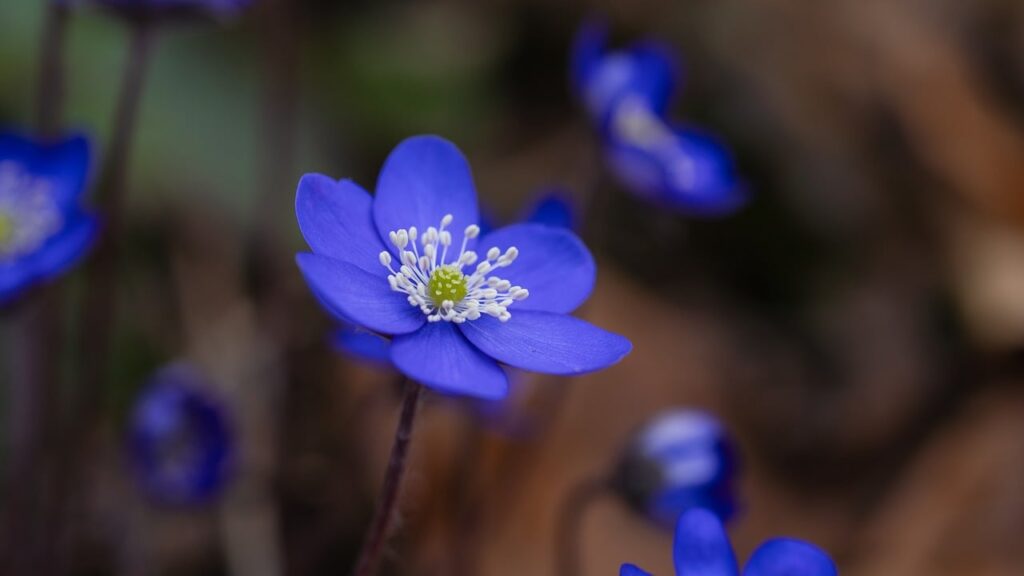Key Highlights:
- Diversity of Colours.
- Pigment family.
- Co-Pigmentation.
- Pigments and Metals.
- Role of PH in Coloration.
There is an infinite variety of flowers in nature but no single flowering plant produces flowers of all colours. However, orchids are famous for their varied colours, there is no total black orchid till date. Similarly in roses, red, yellow, pink, white, orange and their shades are available and importantly enough very recently black and blue roses have been produced, through genetic engineering, Total blue flowers also are not found in Dianthus, Tulip and Gerbera. Yellow varieties are not found in Pelargonium and Cyclamen.
Pigment family:
Flower colour is the result of the mixture of three pigments- Flavanoids, Chlorophyll and Carotenoids in varied proportions. For example, a flower may appear red on account of several reasons. It could be due to the presence of red Flavanoids and the absence of both chlorophyll and Carotenoids or it may be due to the presence of purple Flavanoids combined with orange Carotenoids. Nature mixes and matches the fundamental colours present and creates an array of different colours.
Among the three pigments, available Flavonoids are most common in flowers. Flavanoids fall into Anthocyanins Flavonols, Flavone, Isoflavone Chalkones, Aurones and Grosypetine: The basic structure of Flavanoid consists of two aromatic rings and a heterocyclic ring with oxygen.
Still among the Flavonoids, anthocyanins are the widely occurring group responsible. for pink, violet, scarlet, crimson, red and blue colours in some ornaments like Antirrhinum Dianthus, Petunia, Tulip, Rosa. There are six major anthocyanins, Delphimidin, Cyaniden Malvidin, Pilargonidin and Penidoin. Minor anthocyanins are Lenteolidin Apigonidin, Rosinidin and Hirsultidin. Further, the colour producing part of the anthocyanin molecule is anthocyanidin. The various anthocyanins differ in their structure and therefore, the colour for which they are responsible. These different structures of anthocyanins are produced through hydroxylation, glycosylation, methylation acylation etc. For example an increase in hydroxylation results in increased blueness. Thus cyanidins which are more hydroxylated are bluer than pelargonidin which are less hydroxylated. In the same way, diglycosides are slightly bluer than aminoglycosides.
Orange colours are generally created by the presence of common anthocyanins on yellow background. Orange-yellow and orange-red flowers of Antirrhinum. Dianthus, Dahlia are actually due to the mixture of anthocyanins and flavonoids. Sometimes due to the presence of additional factors mixtures of anthocyanins and flavonoids lead to the production of bronze flower colour such as Helichrysum.
Orange shades are created by the presence of yellow Carotenoids and anthocyanins. For example Rosa, Zinnia, Gerbera, Fresdia where the concentration of these two pigments is variable.
Co-Pigmentation:
One important factor for flower colour is co-pigmentation. Co-pigmented flowers in Prinnual parents give mauve colour, whereas in the absence of flavonols they give maroon flowers. In the bluish varieties of Rosa, certain cyandians (3,5-diglycosiders) are co-pigmented with a large amount of glallotanın. Similarly blue flowers of Ipomea. Platycodon, Senecio and Zebrina contain anthocyanins which are acylated with more than one aromatic acyl substitute.
Pigments and Metals:
Very often blue colour is produced when metals combine with pigments. For example, Iron complexed with cyanidin together with some amount of flavone produces blue colour in blue com flower (Certaurea cyanus). Similarly, Cummelinin is a blue pigment of commelina flowers. It consists of delphinidin glycosider co-pigmented with a flavone and further complexed with magnesium in the ratio of 4:4:2.
Role of PH in colouration:
Generally, the PH of the vacuole is acidic (around PH-5.5) but small changes in PH can have obvious effects on colours. For example decrease in PH causes reddening, and an increase leads to the blueing effect. An attractive example is offered by the shift in colour of “Heavenly blue’ morning glory (Ipomea) flowers during development. The shift due to a change in PH from 6.5 in reddish buds to 7.5 in light blue opened corolla. Similarly, soil PH also influences flower colour formation. In Hyfrangeas a soil PH of 6.0 will produce pink flowers while a PH of 5.5 will produce blue ones. At acidic PH aluminium becomes more available and is found at a higher concentration in sepals than at more alkaline PH. The accumulated aluminium complexes with anthocyanins and colour change from pink to blue. In most orchids, the flowers are buffered which means that PH change has no effect on colours and thus pigmentation is strictly under genetic control.






